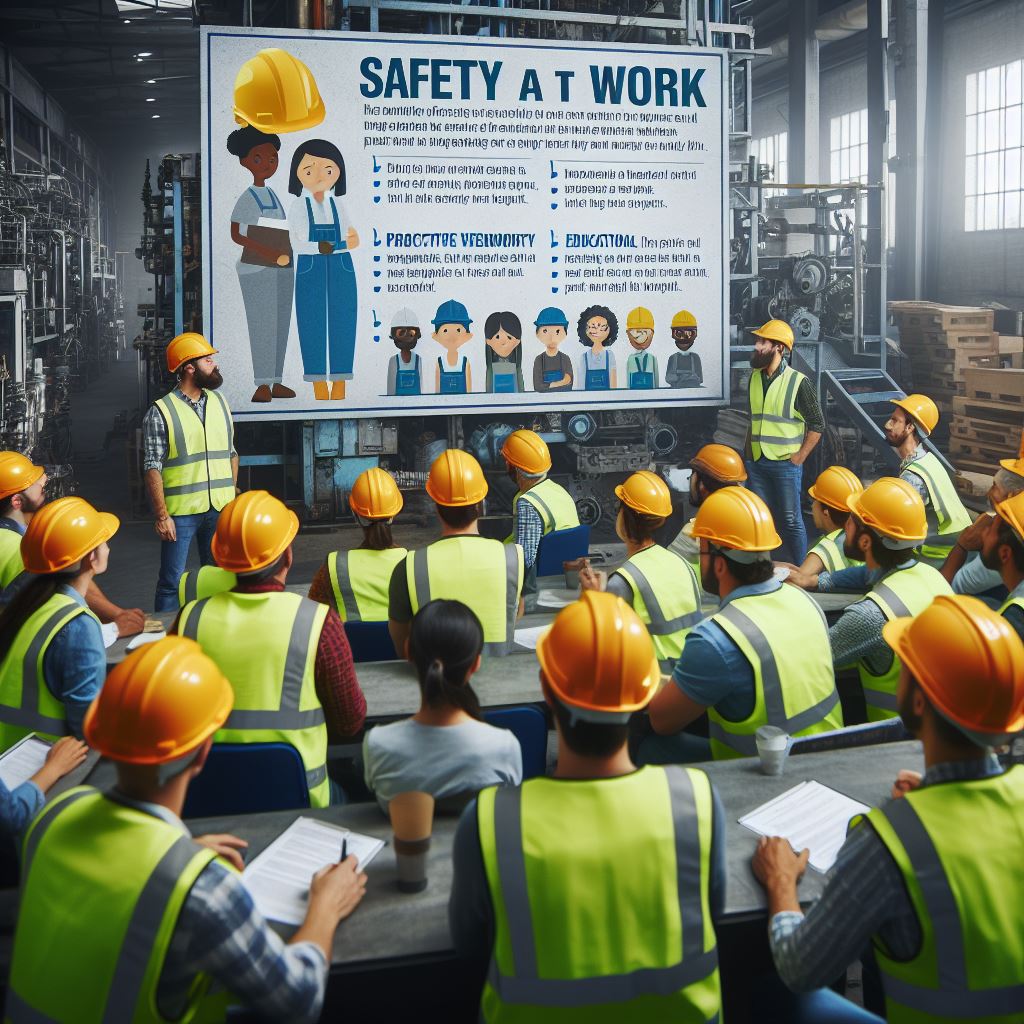In the fast-paced world of business, amidst deadlines and targets, one aspect often takes a backseat – safety at work. It's a topic we hear about frequently, yet its significance can sometimes get lost in the hustle and bustle of our daily grind. However, ensuring safety in the workplace isn't just about ticking boxes or complying with regulations; it's about safeguarding the most valuable asset of any organization – its people.
Let's pause for a moment and reflect on why safety at work should demand our undivided attention.
1. **People Matter**: At the heart of every organization are its employees. They are not just workers; they are individuals with families, dreams, and responsibilities. Ensuring their safety isn't just a legal obligation; it's a moral imperative. Each employee's well-being directly impacts the overall health and productivity of the organization.
2. **Prevention is Key**: It's often said that prevention is better than cure. This rings especially true in the context of workplace safety. Investing in proactive safety measures not only reduces the risk of accidents but also minimizes downtime, lowers insurance costs, and enhances overall efficiency. It's a win-win for everyone involved.
3. **Culture of Care**: A workplace that prioritizes safety fosters a culture of care and accountability. When employees feel valued and protected, they are more engaged, motivated, and loyal. On the other hand, neglecting safety sends a message that their well-being is not a priority, leading to disengagement and resentment.
4. **Legal and Reputational Risks**: Non-compliance with safety regulations can have severe consequences, both legally and reputationally. Fines, lawsuits, damaged brand reputation – these are just a few of the potential repercussions of failing to ensure a safe working environment. Investing in safety is not just prudent; it's a strategic imperative.
5. **Continuous Improvement**: Safety is not a one-time endeavor; it's an ongoing process of continuous improvement. Regular risk assessments, training programs, and feedback mechanisms are essential to identify potential hazards, address safety concerns, and adapt to evolving circumstances. By staying proactive, organizations can stay ahead of potential risks and ensure a safer workplace for all.
So, how can we ensure that safety at work receives the attention it deserves?
- **Leadership Commitment**: Safety starts at the top. Leaders must lead by example, demonstrating a genuine commitment to prioritizing safety in all aspects of the organization's operations.
- **Employee Empowerment**: Empower employees to take ownership of their safety and that of their colleagues. Encourage reporting of safety concerns, provide adequate training, and involve employees in the development of safety policies and procedures.
- **Investment in Resources**: Allocate sufficient resources – whether it's time, budget, or manpower – towards implementing and maintaining robust safety measures. Remember, the cost of prevention is minimal compared to the potential cost of accidents and injuries.
- **Open Communication**: Foster a culture of open communication where employees feel comfortable raising safety concerns without fear of reprisal. Actively listen to their feedback, address their concerns promptly, and communicate safety protocols clearly and effectively.
In conclusion, safety at work is not just a box to be ticked or a formality to be completed; it's a fundamental responsibility that every organization owes to its employees. By prioritizing safety, we not only protect lives and livelihoods but also lay the foundation for a more resilient, productive, and sustainable future. So, let's make safety a non-negotiable priority – because nothing is more important than the well-being of our people.
Stay safe, stay vigilant.
